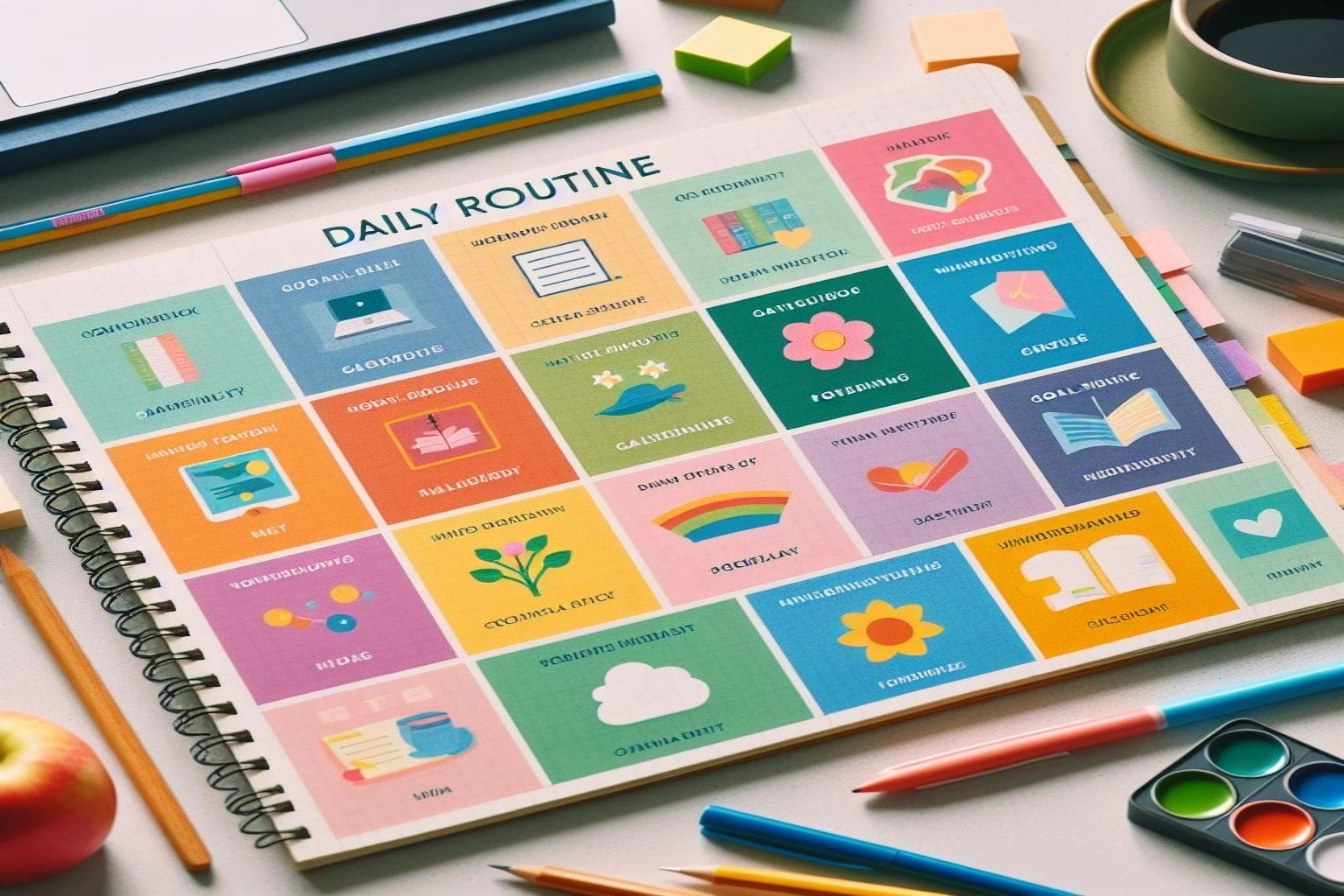
Making a strong first impression doesn’t have to involve thinking of clever lines or witty remarks. In fact, research shows there are many powerful non-verbal techniques you can use to get people to perceive you as attractive, interesting, and confident—all before saying your first word.
Mastering these nonverbal cues taps into human psychology and subconscious preferences in ways that effortlessly draw others to you. With the right body language, stance, wardrobe, grooming and spatial signals, you can instantly pique people’s interest when they first meet you.
In this article, we’ll go over 9 science-backed strategies you can implement to appear more attractive through nonverbal cues alone. We’ll cover simple changes to your body positioning all the way up to advanced techniques related to eye contact, space and mimicry. Implementing even just a few of these can help you make memorable first impressions and have people clamoring for your attention.
1. Stand Your Ground and Hold Space
Here’s a common scenario: You’re chatting with someone you’re interested in and they gradually move closer and closer toward you. Instinct might say to step back a bit and regain some personal space. However, research suggests standing your ground firmly instead can actually increase your attractiveness.
Human beings inherently value their personal space, so when someone encroaches on your territory, not giving any ground back projects an air of confidence and authority. It signals you are comfortable asserting yourself. Furthermore, when you don’t retreat, the other person will likely feel compelled to get closer and closer, entering what’s known as the “intimate zone” of less than 2 feet of separation. Studies show two people standing this close experience increased heart rates and perceived attraction.
So next time you’re talking with someone you want to impress and they approach nearer, hold your stance firmly. Not retreating draws them into your intimate zone, and the resulting excitement and tension gets interpreted as romantic interest and appeal.
2. Read Body Language to Gauge Interest
Becoming an expert at reading other people’s nonverbal cues allows you to gauge their level of interest and attraction before you even say a word. Picking up on positive body language signals will then give you a natural confidence boost, as you’ll know the person already likes you on some level before you approach or start a conversation.
Here are three major nonverbal signals that indicate someone is intrigued and attracted:
Pointed Feet – People instinctively point their feet in the direction they want to go. When someone’s feet point toward you, it’s a subconscious sign they feel engaged and invested in you and the interaction.
Sizing You Up – When someone locks eyes with you from across the room, then slowly scans you up and down, this is a clear indication they are checking you out. Extended eye contact plus an full body scan means they very likely want you on some level.
Rosy Cheeks – Flushing of the face and skin reddening is often a result of increased heart rate, which is a sign of physiological arousal and attraction. Rosy cheeks means you’ve gotten their pulse going, which makes you appear desirable.
Tuning into these signals helps you perceive interest and intrigue before initiating contact, letting you approach with confidence.
3. Dress to Impress
While your natural facial features and physical appearance contribute greatly to your attractiveness, don’t underestimate the power of style and wardrobe as well. The clothes you choose to wear have a significant psychological impact on how others perceive you.
Studies reveal women pay particularly close attention to a man’s style and make judgements about three qualities: status, height, and maturity. Fortunately, choosing certain garments over others can help optimize these traits:
Status – Wearing sharp, well-fitted button-down shirts projects professionalism, competence and higher socioeconomic status compared to more casual t-shirts. The dress shirt gives you an instant boost, making you appear mature and successful.
Height – High-waisted trousers that sit above the hips elongate your leg lines, helping compensate for any lack of natural height. Since studies show women prefer men approximately 8 inches taller on average, visual hacks like high-waisted pants make you seem larger.
Maturity – Adopting an “old money” inspired aesthetic with knitted polos, cardigans, loafers, and grandpa style pieces makes you seem seasoned and experienced. This “George Clooney” effect taps into the appeal of older men.
Dressing for your body type and style preferences allows you to put your best foot forward for first impressions without saying anything.
4. Open Up Your Body Language
Crossed arms, fidgeting hands, furrowed brows – closed off body language reads as uninviting. You want to appear open. Studies reveal both men and women find open body positioning more approachable and attractive.
Here are three areas to check yourself on to avoid appearing standoffish:
Eyebrows – If you raise your eyebrows a lot or furrow them angrily, this inadvertently makes you look stern, intense or aggressive. Relax your brows so you don’t appear tense or angry-looking.
Eyes – Practice smiling with your eyes, not just your mouth. Genuine smiles reach the eyes, forming wrinkles at the corners. Open up your eyes to appear warm and friendly.
Arms – Let your arms relax at your sides or gesture openly rather than crossing in front of your chest or touching your face and neck nervously. Keep them unblocked.
Opening up your body language signals receptivity, enthusiasm and warmth.5. Face Them and Give Your Full Attention
Want to show someone they have your complete interest and attention? Square up your body directly facing theirs. Face them head-on and give strong eye contact.
This nonverbal technique called “fronting” communicates 100% engagement and focus. To perform it smoothly:
- Point your toes toward the other person
- Keep your torso and hips squared in their direction
- Lean in and maintain a steady gaze with them
By fronting someone, you send the clear message that they are the absolute center of your world in that moment. This validation makes them feel special, gaining their trust and attraction.
6. Claim Your Space
project strength and confidence simply by how you hold and position yourself. Avoid caving in or shrinking as you stand – instead do the opposite: expand outward and take up room.
Here are a few ways to claim your space to maximize your presence:
- Spread feet shoulder-width apart while sitting or standing
- Rest arms on any available armrests or other surfaces
- Place personal items around you territorially
- Move fluidly around the space rather than staying fixed
Claiming space makes you appear authoritative rather than meek. Standing tall with squared shoulders and open body language also optimizes testosterone versus caving inward which lowers it. Maximizing natural testosterone boosts appeal.
7. Initiate Extended Eye Contact
Maintaining strong, unbroken eye contact with someone for an extended period elicits an emotional response. Studies show holding eye contact for 2 minutes or more causes both parties to release oxytocin, the bonding hormone.
This intimate act of gazing into another’s eyes has been shown to forge a sense of affection and closeness with a stranger. So don’t underestimate the power of catching someone’s gaze across the room and holding it confidently. This simple signal can spark romantic feelings leading them to approach you.
8. Mirror Their Movements and Behaviors
Have you ever noticed how when you spend enough time around someone, you naturally start picking up each other’s little quirks and habits? This subconscious mimicry actually has social advantages.
When you subtly mirror someone’s body language and behaviors, it chemically rewards their brain by lighting up areas associated with pleasure and bonding. Here are some ways to put this trick into practice:
- Adopt their posture, gestures, tilt of head
- Match the cadence and volume of their voice
- Reciprocate smiles, laughs, checking out
- If they touch you, return the touch
Studies confirm that mirroring someone’s nonverbals makes them feel validated and creates rapport quickly. Use this to your advantage when you want to attract someone.
9. Optimize Grooming
It’s easy to overlook, but careful attention to grooming ensures you put your best self forward on first impressions. When meeting someone, these are the areas they notice right away:
Face – Wash, moisturize and exfoliate your face daily so you appear fresh and youthful, not oily or blemished. Well-cared for skin boosts attractiveness.
Hair – Keep hair neatly trimmed and style it purposefully. Or opt for a close buzzcut for low maintenance and stylish minimalism. Pay attention to wild nose and ear hairs too!
Scent – Practice consistent oral hygiene and wear a light, appealing fragrance. Clean breath and a good scent appeals to the senses.
Sharpening your grooming makes you appear put together and confident, paying attention to the little details that maximize appearance.
The next time you attend an event or gather with new people, try implementing several of these nonverbal attraction strategies. From purposeful body language cues and magnetic eye contact to strategic wardrobe choices and impeccable grooming, you can fully optimize your presence and appeal before having to say a single word. Mastering these powerful unspoken signals helps guarantee you make memorable first impressions.







